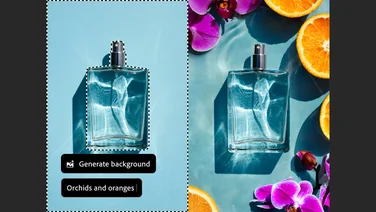To help us provide you with free impartial advice, we may earn a commission if you buy through links on our site. Learn more


Cakewalk Sonar has an impressive history of innovation. It was among the first music packages to combine traditional recording techniques with dance-oriented loop manipulation, and powerful features such as its V-Vocal pitch manipulation and AudioSnap audio quantise predate similar features in its main rival, Steinberg Cubase.
In this latest update, the emphasis is on workflow. The interface has been radically overhauled, largely doing away with multiple floating windows in favour of a docked-panel approach. It’s a welcome move, as while we’ve always admired Sonar’s abilities, we’ve been less fond of its interface. Its utilitarian appearance bordered on being ugly, windows battled for screen space and excessive use of cryptic icons, acronyms and long right-click menus made it feel more technical than creative to use.
Visually, the new interface is a vast improvement, despite the sombre colour scheme. The transport controls and various other dense clusters of buttons have been redesigned into a single Control Bar that runs along the top of the screen. There’s still a lot for new users to take in – more text descriptions would have been welcome – but the learning curve is shallower than it was before.

The new interface makes better use of the available screen space but it still requires a big monitor – or preferably two.
An updated Inspector panel appears on the left, showing the selected track’s mixer channel and, cleverly, the bus channel that it’s routed to. Clip and track properties can be displayed here too, although these views hark back to the dense information blasts of old. The right of the screen is home to a new Browser panel with three tabs for media, plug-ins and any virtual instruments currently in use. It’s well organised, and media and plug-ins can be dropped into the project.
The new MultiDock window runs along the bottom of the screen, and is home to pretty much everything else – the main mixer view plus editors for audio waveforms, loops, MIDI piano roll and music notation. The downside is that, even on our 1920×1200-pixel display, there wasn’t enough room for the MultiDock window to be of much use until we enlarged it at the expense of the main Track View, where the bulk of recording and editing takes place. The new Screensets provide a workaround by saving and recalling panel layouts, but it wasn’t a perfect solution. All panels can be undocked, rearranged and turned into floating windows, and dragging the MultiDock to a second monitor worked well for us. It’s disappointing that Sonar still feels cramped on a single monitor, though.
The redesign also fails to address another of our long-standing misgivings: things don’t always work exactly as we expect them to. The pop-up windows for the bundled virtual instruments include preset managers that are confusingly devoid of any presets. The V-Vocal editor has an untidy approach to version management, hiding muted clips behind active ones. Even something as simple as enabling or disabling the click track was only possible when playback was stopped. There are several more minor issues – the revamped interface is more than skin deep but it isn’t as thorough as we’d have liked.
Three versions of Sonar X1 are available, with the Studio version reviewed here sitting between the flagship Producer (£317 including VAT) and the entry-level Essential (£79). Sonar X1 Essential is limited to 64 audio and instrument tracks and various other mixer count restrictions, it omits some advanced editing modes and comes with a basic library of effects and virtual instruments. X1 Studio is much closer to X1 Producer, differing only in their bundled effects and instruments, with a handful of the best ones absent in Studio.

The bundled instruments and effects are a motley crew rather than the stripped down yet high quality collection we’d hope for in this mid-price package.
However, it’s these effects and instruments that help Producer to stand out from its peers. Without them, X1 Studio’s plug-in bundle is patchy and the software struggles to carve a niche for itself. It scores highly for its breadth of editing features, from V-Vocal processing to its Track Layers for handling multiple takes, and its mixer routing couldn’t be more flexible. As such, it ticks more boxes than Steinberg Cubase Artist 6, which is more significantly cut-down compared to the flagship Cubase 6. However, Cubase Artist is more refined and exhibits greater attention to detail; we prefer its quality over Sonar X1 Studio’s quantity.
| Details | |
|---|---|
| Price | £169 |
| Details | www.cakewalk.com |
| Rating | *** |





